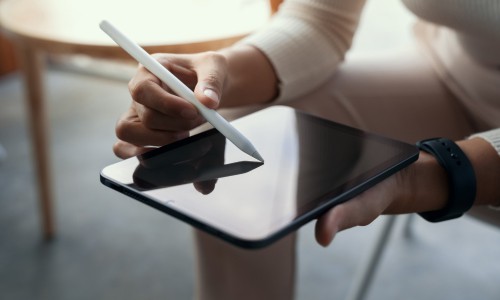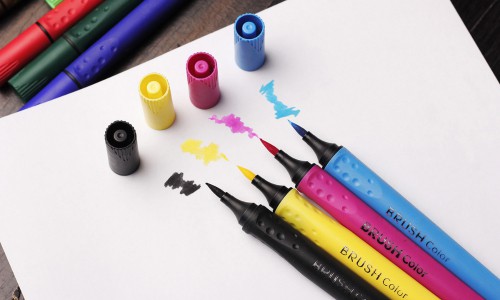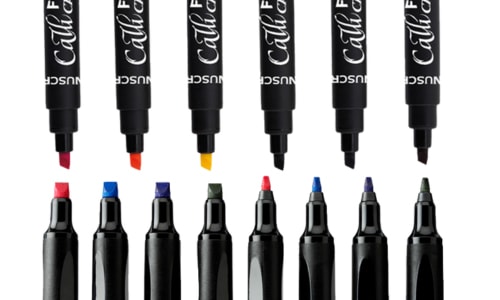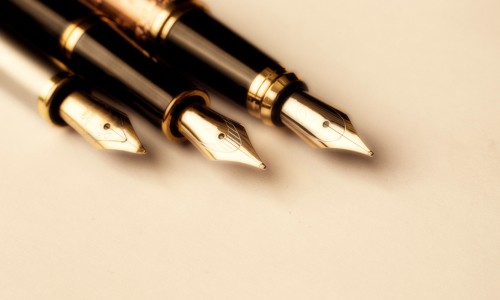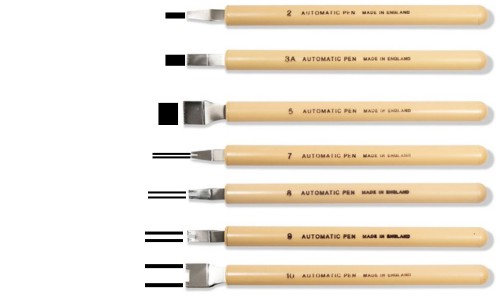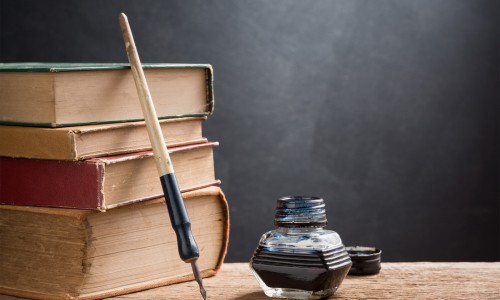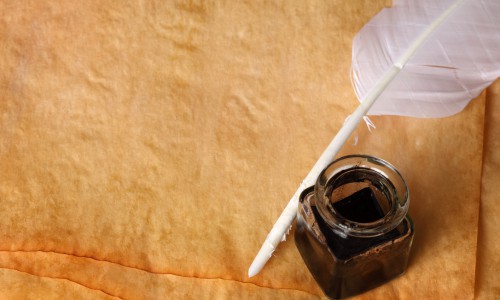Calligraphy is an artistic way of writing that you can do regardless of age and skills. With its wide variations, there are different kinds of pens that you can use, depending on the style you want to achieve.
This article will give you a comprehensive guide to the different types of calligraphy pens. There are:
- Modern Calligraphy Pens
- Stylus pens
- Monoline pens
- Brush pens and markers
- Italic markers
- Fountain pens
- Automatic pens
- Dip pens
- Ancient Calligraphy Pens
- Coit pens
- Quill pens
- Reed pens
Let’s discover their uses, special features, plus some calligraphy pen basics you need to know.
Table of Contents
Modern Calligraphy Pens
1. Stylus Pens
A stylus pen is an electronic device that resembles a ballpoint pen, with a metal tip and a slim barrel.
It is not an inking pen but a tool that functions like a pen for computers, tablets, and cellular phones.
This modern pen is popular for techy calligraphers who do digital lettering, and it’s quite easy to learn for beginners too!
Some stylus pens are like brushes—they can be pressure sensitive—and since this type is a digital pen, you can customize it using software like Procreate and Adobe, so it can pull off whatever style you desire.
2. Monoline Pens
From the name itself, a monoline pen is any pen that produces consistent line thickness regardless of the pressure applied. Examples include gel pens, technical pens, felt tip pens, and markers.
Contrary to the common notion that you need a special tool to do calligraphy, you can do it using any of these regular pens and a bit of creativity. Moreover, you can also get fancy with a glass pen and dip pens with monoline nibs.
Since they produce consistent strokes, you do not have to worry much about hand control. Aside from monoline calligraphy, these are best for faux calligraphy as well.
3. Brush Pens and Brush Markers
Brush pens are considered professional calligraphy pens. They can have natural or synthetic bristle tips and like fountain pens, plus real ink reservoirs that can be a cartridge type or squeeze type, which are mostly refillable.
Brush markers are popular among beginners. They often have tips made with felt or nylon and are disposable. However, depending on their material and flexibility, the pens could require more control and time to master.
The flexible tips are designed to mirror real brushes and produce different line widths that change with different levels of pressure. Meanwhile, firmer nibs offer fewer line variations but are easier to use.
These calligraphy pens are very versatile and come with a wide variety of inks and color options. It can cover many calligraphy styles, especially Asian calligraphy and modern calligraphy.
4. Italic Markers
Italic markers have compact plastic barrels with molded nylon or felt tips and an ink reservoir. It’s disposable and works like a regular marker.
However, what makes it special is its sleek square cut and broad edge nib, which is designed for italic lettering and Gothic calligraphy.
These markers are the ultimate option for beginners who want to achieve clean edges. It produces an effect similar to what you can get using a broad fountain pen or dip pen, but with lower costs and no ink refilling or dipping.
5. Fountain Pens
Fountain pens have ink reservoirs that can either be refillable or disposable. The inks and refill sizes can likewise vary.
These pens are in the premium bracket, since they are built with quality materials designed to last.
Fountain pens come with different nib types with varying flexibility and sizes that you can customize to fit your lettering style.
However, they are most suitable for practicing faux calligraphy, and a pointed or chiseled nib will do the job well.
One disadvantage of this type is that fountain pen ink can fade over time, and the nibs are not as flexible as the ones on dip pens.
6. Automatic Pens
The automatic pen is the ultimate inspiration for the more modern parallel pens by Pilot. They have broad tips composed of two angled metal plates held together.
However, traditional automatic pens are dipping pens, and they do not come with ink cartridges. The amount of ink intake upon dipping is determined by the distance between the nib’s metal plates.
These pens can draw smoothly in multiple directions and are popularly used for one-stroke calligraphy.
7. Dip Pens
Dip pens are one of the earliest modern pen inventions. It is a two-part assembly composed of the nib and handle. It does not have built-in reservoirs and is designed to be dipped in ink before use.
There are two types of dip pens:
- Straight pen – has a straight handle that gives you a similar feeling to holding a paintbrush; suitable for left
- Oblique pen – Its nib is positioned at the side with an angle that is a perfect match for script calligraphy. This type is better for advanced and right-handed users.
Dip pens can take on different nib types, such as monoline nibs for monoline calligraphy, broad nibs for italic, and flex nibs for pointed pen calligraphy.
Among these types, the oblique calligraphy pen gives the most support for controlling line thickness.
Related comparisons:
Ancient Calligraphy Pens
1. Coit Pens
Coit pens have a close resemblance to dip pens, but with distinct extra large and flat folded nibs, and these giant multi-lined nibs can hold more ink than dip pens.
The nibs are made with brass, which is highly resistant to corrosion.
These are some of the rarest vintage calligraphy pens that are still used for calligraphy today. They are good pens for bold, italic, Gothic, and other forms of large lettering.
2. Quill Pens
A traditional quill pen is made from a large bird’s flight feathers, carefully selected and processed to have sharp ends. This end will serve as its tip while the feather’s cavity accommodates the ink while dipping.
During its reign, quill pens appeared to be a strong political symbol that was featured in different emblems and seals of several government agencies in the United States of America.
More than that, quill pens also serve as the foundation of modern day calligraphy pens. Today, these pens are still valued and utilized by professional calligraphers and collectors.
3. Reed Pens
Reed pens are the earliest form of dipping pens, which are typically made from sharpened hollow stems of reeds and bamboo.
Before the invention of sophisticated pens, this tool was an essential writing instrument used by famous artists like Van Gogh and has been a major contributor to Arabic calligraphy.
Conclusion
There you have it – the different types of calligraphy pens. You can always start with whatever tool you have at hand.
That said, if you’re looking into practicing a particular style, then you may have to match that with specific pens for calligraphy.
Italic and Gothic styles would require a broad edge pen like the italic marker, coit pen, or automatic pen.
On the other hand, copperplate and other pointed calligraphy need tools with sharp points like monoline or quill pens.
If you’re looking for a more versatile option, go for fountain, dip, brush, or stylus pens.

Art has always been a part of my life; it influences my upbringing and later my career choice. For me, it is always a part of my parenting technique. So for whichever purpose that you come to art, you can start here with us.

